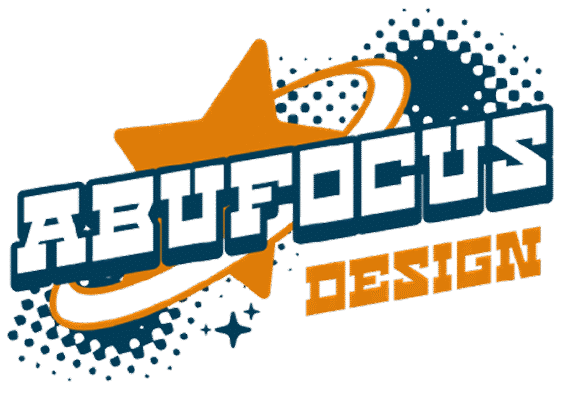2024
FOODVILLE
Foodville is an innovative food and grocery delivery app designed to provide users with a seamless and convenient experience for ordering meals and groceries directly from their mobile devices. The app aims to simplify food and grocery shopping with a wide variety of options, personalized recommendations, and reliable delivery services. A standout feature of Foodville is its safe delivery box, which secures orders to prevent tampering—ensuring a high level of trust and food security for users.
Role
Lead Product (UIUX) Designer
Team
Founder
Product Owner
UX Researcher (Me)
Lead Designer (Me)
Developer
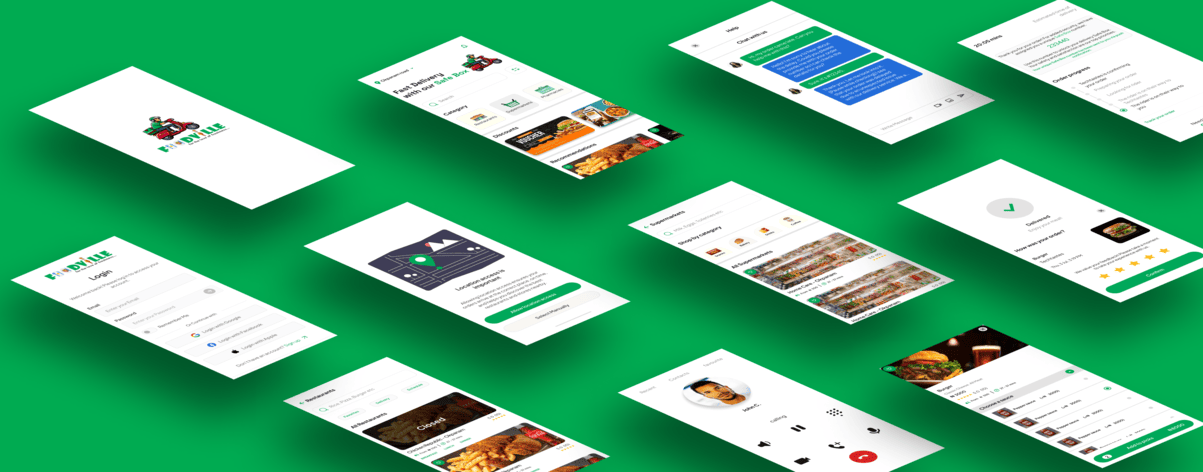
Click to jump to the relevant section
Problem Statement 👉🏾
Objectives 👉🏾
Goals 👉🏾
Project Timeline 👉🏾
Business Challenges 👉🏾
Design Thinking Process 👉🏾
Define Phase 👉🏾
Ideate Phase 👉🏾
Design Phase 👉🏾
Conclusion👉🏾
Problem Statement
Existing food delivery apps were failing to meet user needs effectively. Slow delivery times, unreliable tracking, and limited product customization options made the experience frustrating. Many users expressed concerns about food safety, especially regarding delivery handling. This inspired us to build a solution that could tackle these challenges directly.
Objectives
- To provide real-time information about food and grocery availability, delivery status, and personalized recommendations to users.
- To make the application more intuitive and user-friendly, reducing the learning curve for new users.
- To increase the number of users of the application and improve retention rates by providing added value to users.
Goals
- Ensure users have up-to-date access to product availability, order progress, and tailored suggestions to enhance their shopping experience.
- Simplify navigation, optimize user flows, and create a seamless onboarding experience to encourage adoption and continued use.
- Offer features like the Safe Delivery Box for secure deliveries, personalized deals, and loyalty rewards to attract new users and keep existing users engaged.
- Achieve a 4.5-star rating or higher on app stores within six months of release.
Project Timeline
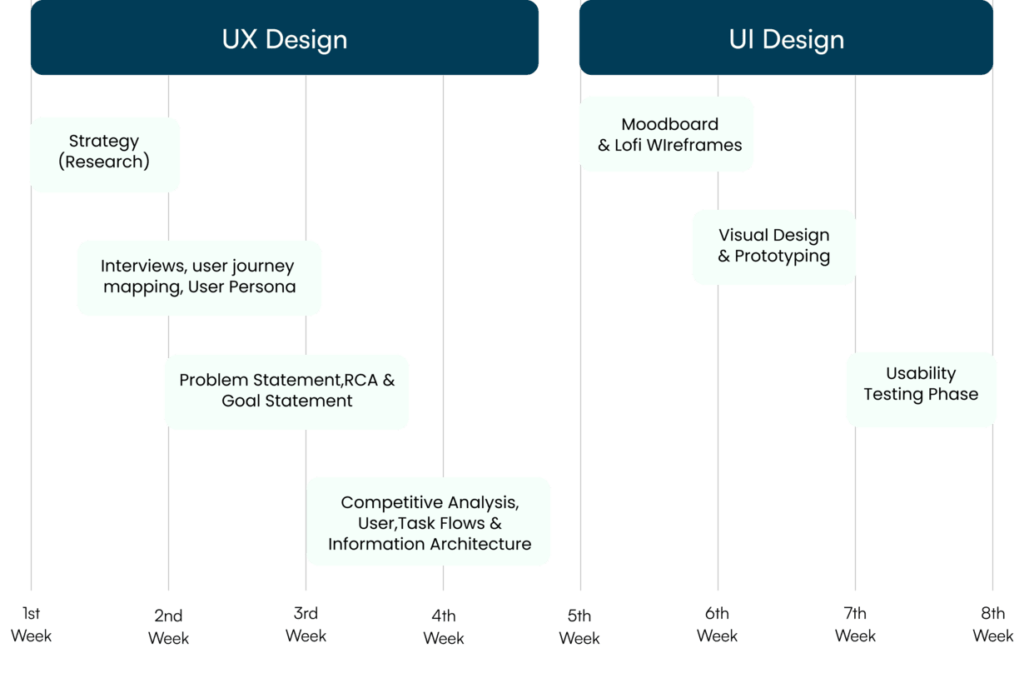
Business Challenges
- Limited Budget: Operating with financial constraints, which may impact marketing efforts, technology upgrades, and service expansion.
- Payment Integration: Ensuring smooth, secure, and seamless payment processing for various methods, including local and international payment systems.
- Delivery Partner Availability: Finding and retaining reliable delivery partners, especially during peak hours or in remote locations.
- Market Competition: Standing out in a competitive food delivery market with established players offering similar services.
Design Thinking Process
The goal is to deliver an exceptional user experience and provide added value through the development of the Foodville app, a new product. By leveraging the Design Thinking process, the aim is to create a user-centric solution that simplifies food and grocery ordering, ensuring convenience, variety, and secure delivery right from the start.
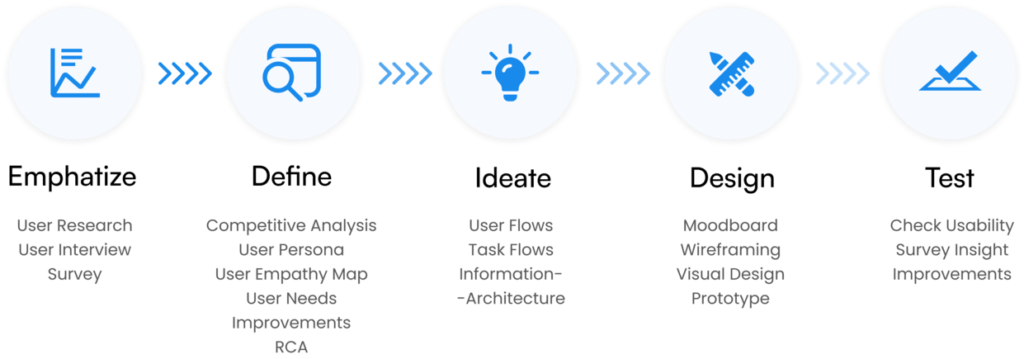
Empathize Phase
User Interviews
In conducting user interviews, I aimed to understand the experiences and pain points of individuals when it comes to ordering food and groceries online. Through open-ended questions, I sought to uncover their perspectives on existing apps and services, as well as their specific needs and preferences for a seamless delivery experience. The insights gained from these interviews were integral to informing the design decisions made throughout the user-centered design process for the Foodville app.
Some Interview Questions
- Can you describe your typical experience with ordering food or groceries online?
- What do you like most about using delivery apps?
- What challenges have you faced when using food or grocery delivery services?
- How do you usually decide which delivery app to use?
- Have you ever had concerns about the security of your food during delivery? If so, could you share more about that?
- What features would make a food delivery app stand out to you?
- Are there any steps in the ordering process that you find frustrating or confusing?
- Can you think of a recent time when a food or grocery delivery app didn’t meet your expectations? What happened?
- How important are personalized recommendations (e.g., meal suggestions or grocery bundles) in your decision-making process?
- Do you prefer seeing detailed tracking information for your deliveries? Why or why not?
- What are your thoughts on the idea of a secure delivery box for your food or groceries?
- If you were using a secure delivery system, what would you expect from it in terms of convenience and safety?
- If you could design the perfect food or grocery delivery app, what features would it have?
Quantitative Research
In addition to user interviews, we conducted a quantitative research study to gather numerical data about users’ preferences and behaviors related to food and grocery delivery. This involved distributing a survey to a large sample size of individuals across different demographics. The data collected provided valuable insights into the target audience’s needs and expectations, which guided our design decisions for the Foodville app. This quantitative research helped us identify patterns and trends in users’ ordering habits, preferences, and pain points, enabling us to design features that cater specifically to their needs.
Observations
80%
50%
65%
85%
70%
of users showed interest in personalized recommendations based on their location, previous orders, and dietary preferences.
Key Insight Derived - User Needs
- Transparent Pricing: Users need clear and upfront pricing to build trust and avoid unexpected costs.
- Reliable Delivery: Users prioritize dependable and timely delivery services, especially during high-demand periods.
- Enhanced Food Security: Users value features like the secure delivery box to ensure food safety and prevent tampering.
- Personalized Recommendations: Users prefer tailored suggestions based on their preferences, dietary needs, and order history.
- Detailed Information: Users appreciate clear details about food preparation, quality standards, and delivery tracking.
- User-Friendly Experience: Users desire a simple and intuitive interface that makes ordering meals and groceries stress-free.
Features & Functionalities
To resolve user needs

User-Friendly Design for a Diverse Audience

Comprehensive Product Information
Detailed descriptions of meals and groceries, including ingredients, preparation details, and nutritional facts.

Personalized Recommendations
Auto suggestions based on user preferences, order history, and location for a tailored shopping experience.

Safe Delivery Assurance

Real-Time Delivery Tracking
Live updates on delivery status to keep users informed from order placement to doorstep arrival.

Enhanced Support System
24/7 customer service for resolving inquiries and addressing issues promptly.
Define Phase
Competitor Analysis
When designing a product, it’s essential to have a thorough understanding of the competition. In this competitor analysis section, we will examine three food and grocery delivery applications: Jumia Food, Bolt Food, and Glovo. By analyzing these apps, we aim to gain insights into their features, strengths, and weaknesses. This understanding will help us make informed design decisions to enhance the Foodville app and deliver a superior user experience.
Apps to be analyse
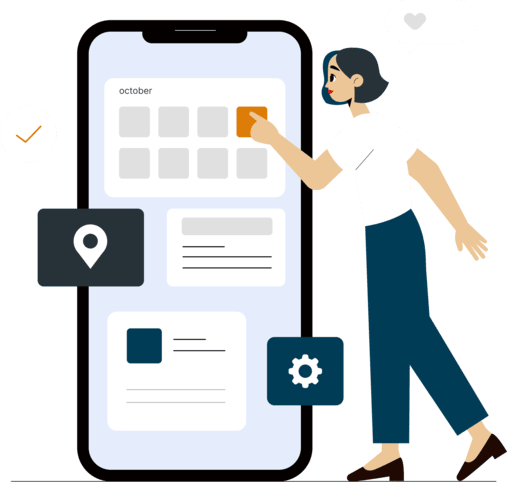
Making Food Delivery Easier Anytime, Anywhere
Jumia Food excels in providing a seamless and reliable food delivery experience, offering access to a wide variety of local and international cuisines. Its user-friendly app ensures that customers can order meals quickly and conveniently, no matter where they are.
Safe and Reliable Deliveries Done Right
Bolt Food is renowned for its emphasis on speed and reliability. With real-time tracking and efficient delivery systems, it ensures that customers receive their orders fresh and on time, enhancing overall user satisfaction.
Convenience Made Global
Glovo’s strength lies in its versatility, delivering not just food but groceries, essentials, and more. Operating across multiple cities worldwide, it combines convenience with a global reach, making it an indispensable tool for urban dwellers.
Food Delivery Made Easy
All three competitors simplify the process of ordering food and essentials with features like modern payment options, priority delivery services, and clean, intuitive user interfaces. They are designed to provide exceptional convenience and satisfaction to their diverse user bases.
The user-centered design process applied to the development of the Foodville app delivered exceptional results. Through user research, empathy mapping, and competitor analysis, we identified and tackled significant user pain points, enhancing the overall experience. Foodville stands out with unique features like personalized meal and grocery recommendations, a secure delivery box system for tamper-proof orders, and a user-friendly interface that simplifies the ordering process. These functionalities distinguish Foodville from competitors, providing users with added convenience and peace of mind. This approach has resulted in a successful product that meets and exceeds the expectations of its target audience.
User Persona
The User Persona section offers a comprehensive view of Foodville’s target users, detailing their background, goals, frustrations, needs, motivations, and a brief story. By gaining a deep understanding of our users, we were able to design an intuitive and efficient food and grocery delivery app that caters to their preferences. These personas were crafted using real-world data and insights gathered through research and interviews, guiding the design process to ensure the final product effectively meets the needs of its intended audience.
Empathy Map
An empathy map is a tool used to understand the needs, thoughts, emotions, and experiences of users ordering food and groceries online. It helps designers gain insight into their users’ preferences, frustrations, and motivations, allowing them to create solutions that align with their goals. This understanding ensures that the design of Foodville meets the needs of its users, offering a seamless and satisfying experience.
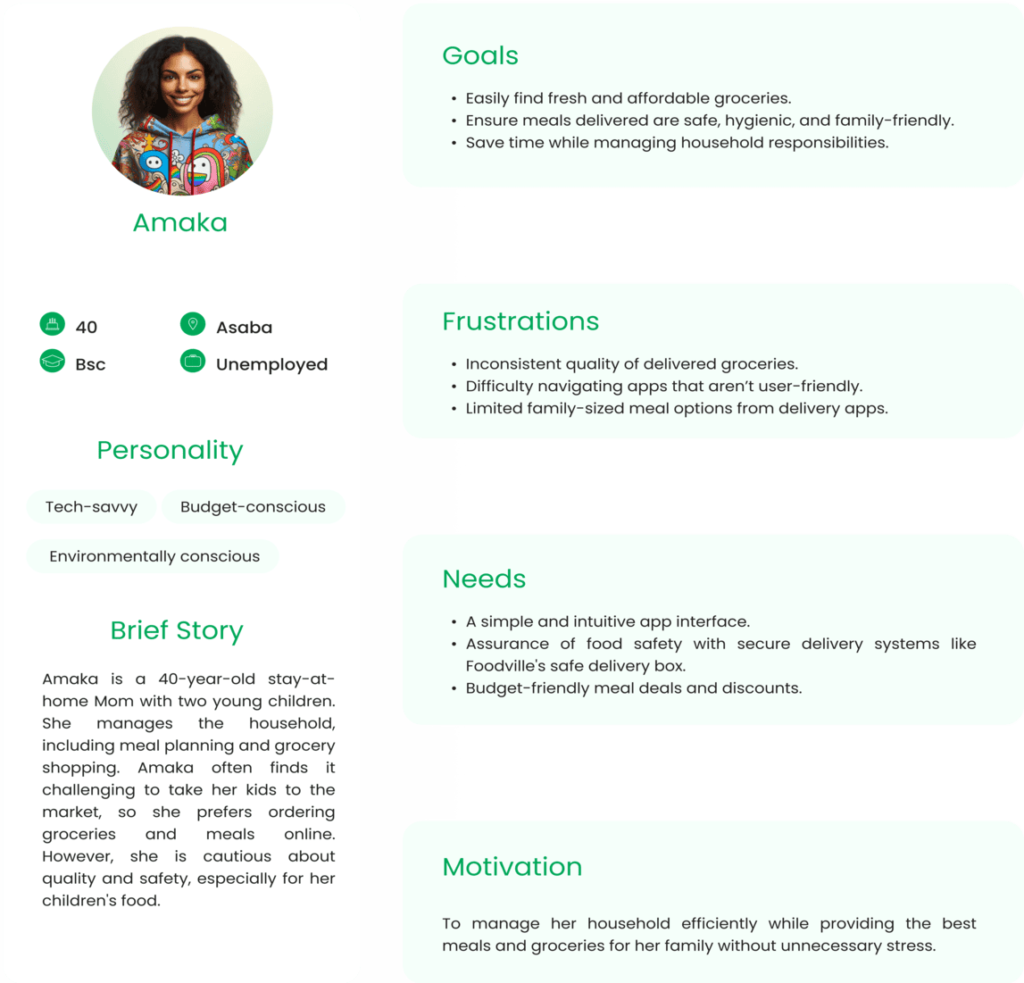
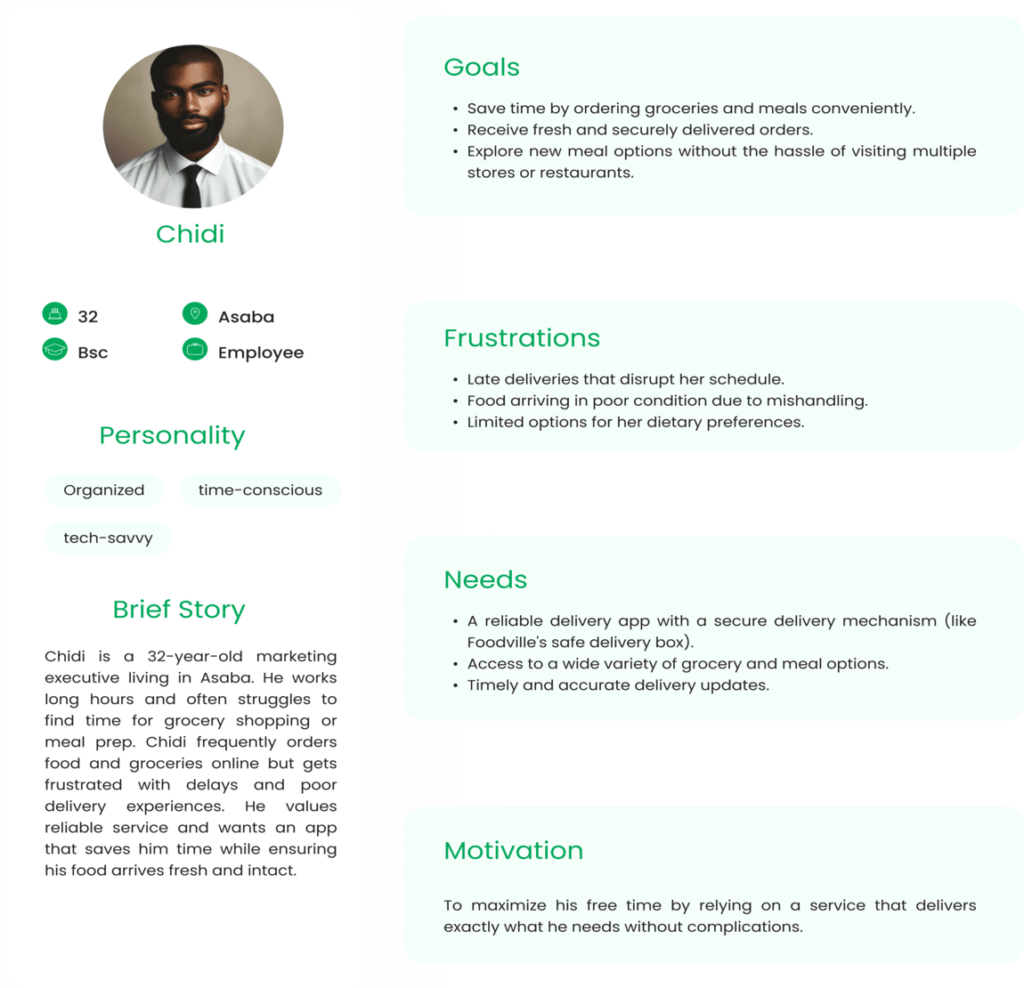
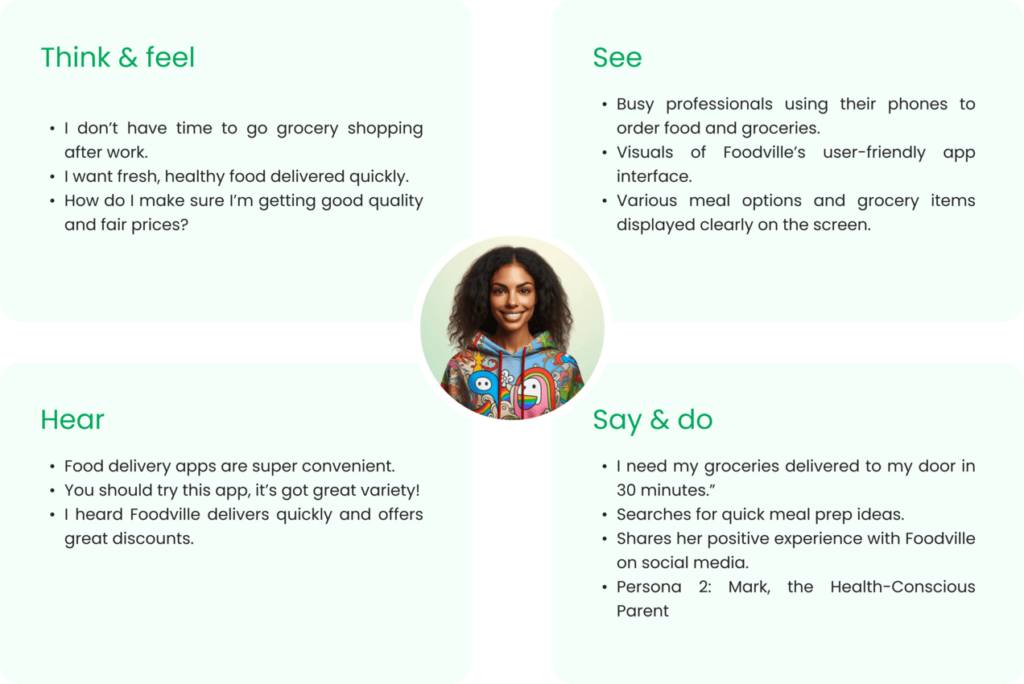
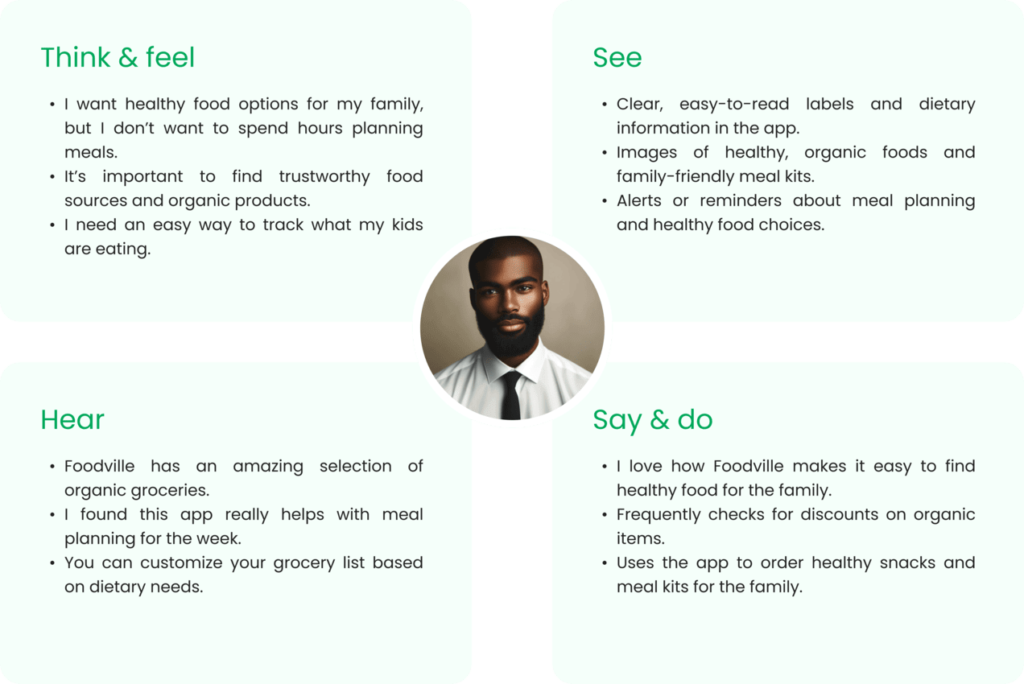
Ideate Phase
User Flows
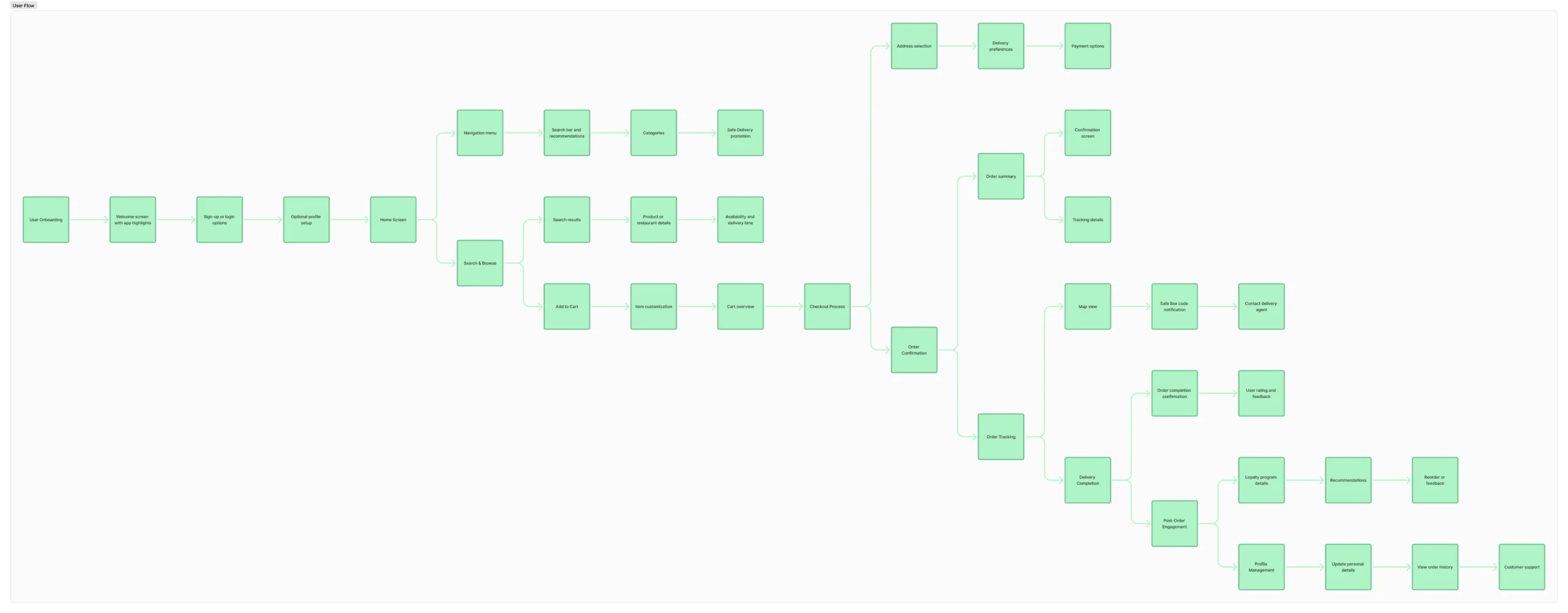
Actual Screenshot from Figjam file
Information Architecture

Actual Screenshot from Figjam file
Design Phase
Mood Board
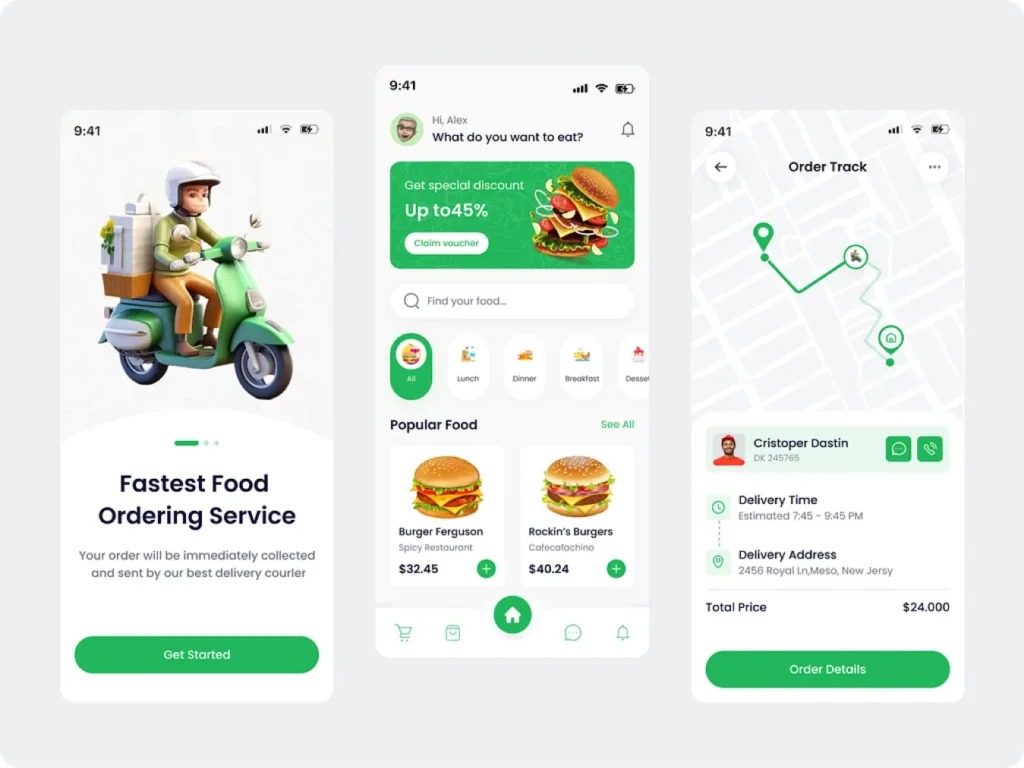
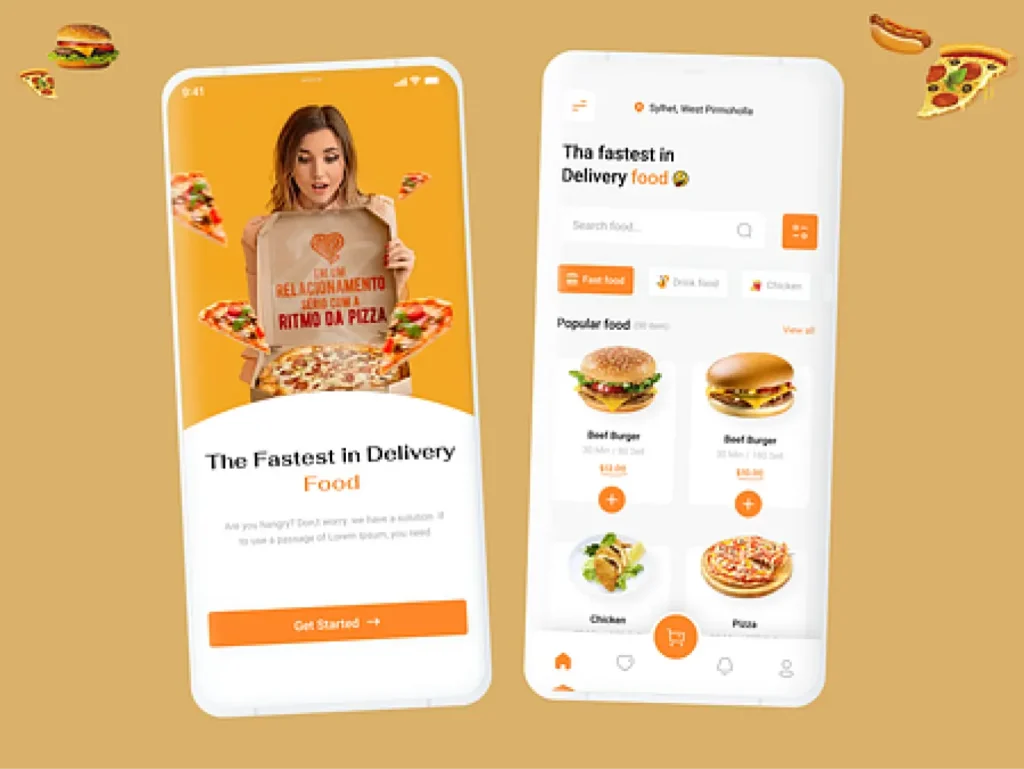
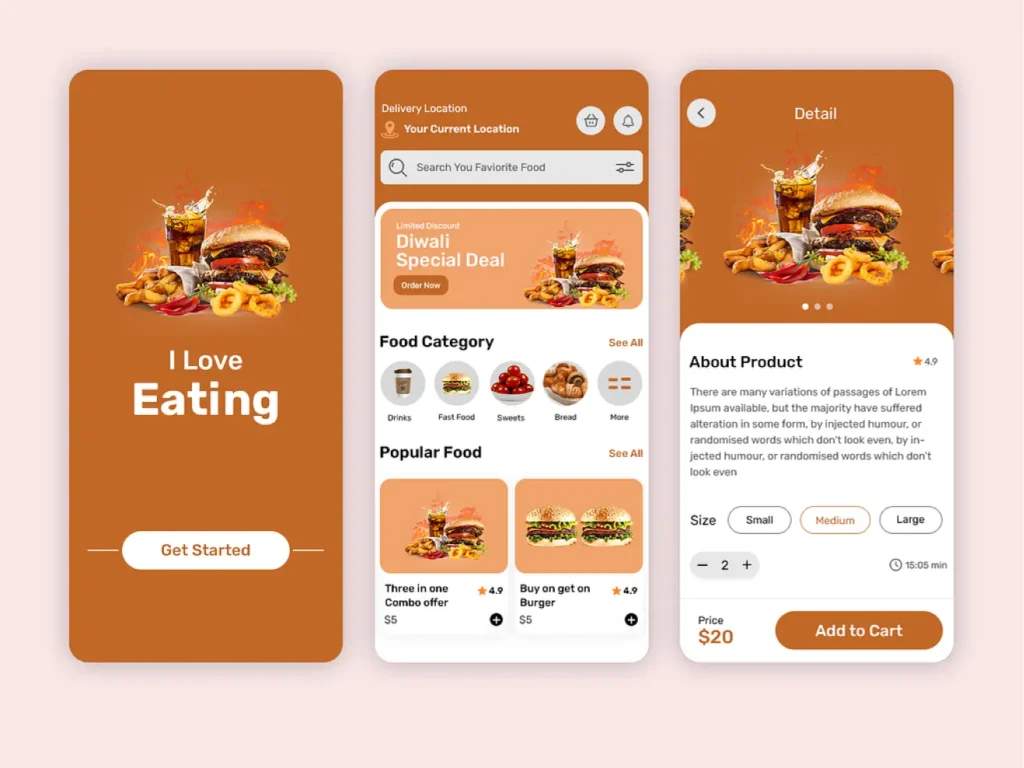
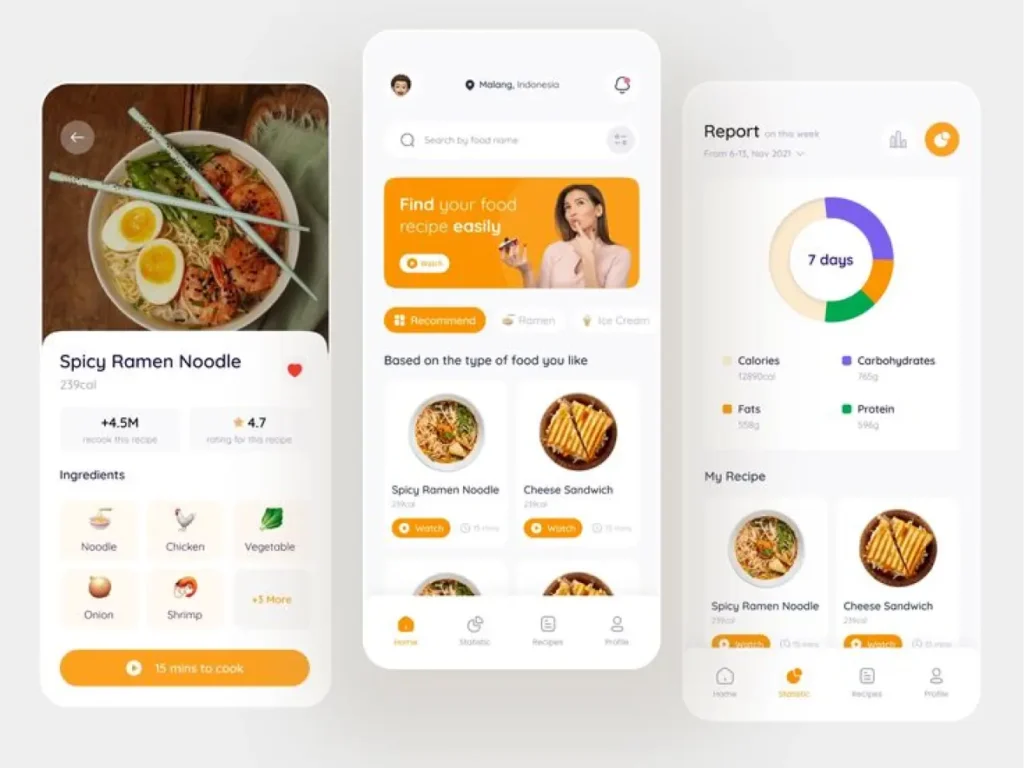
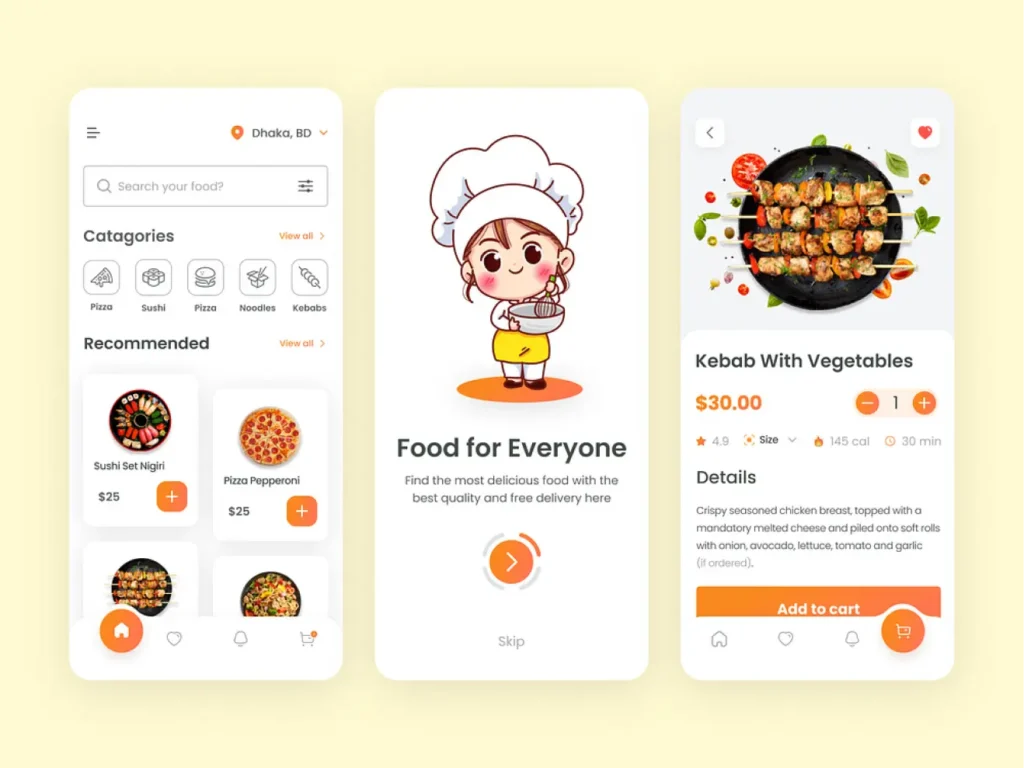
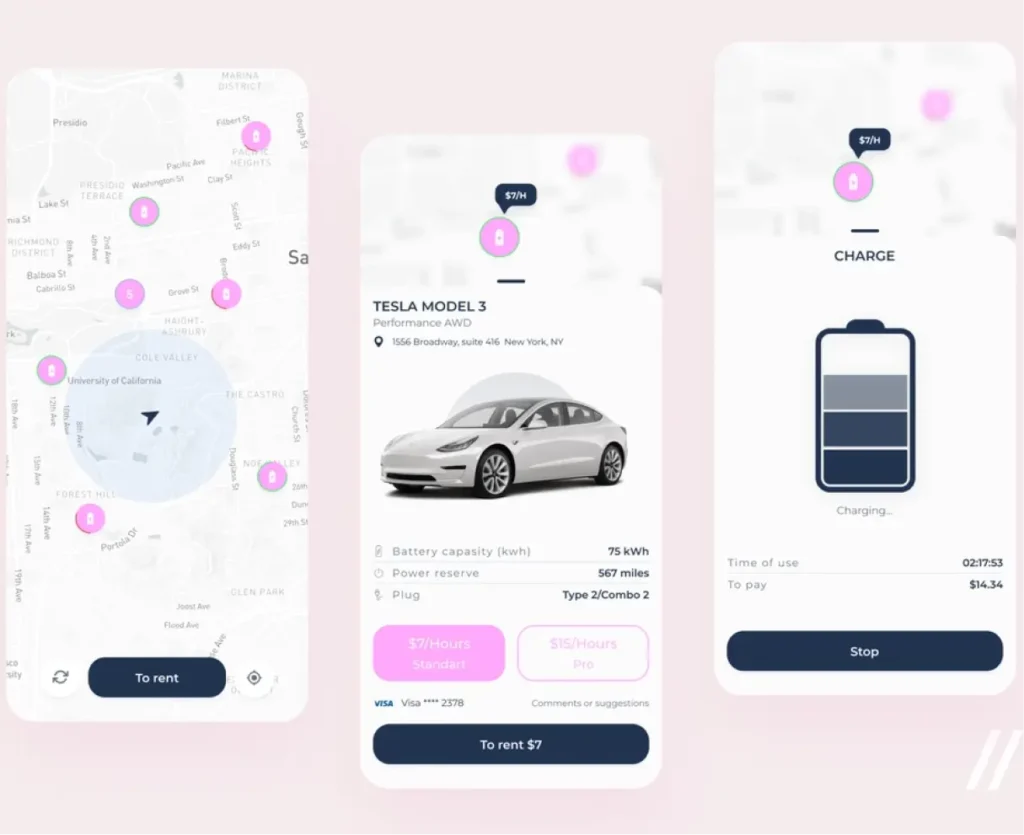
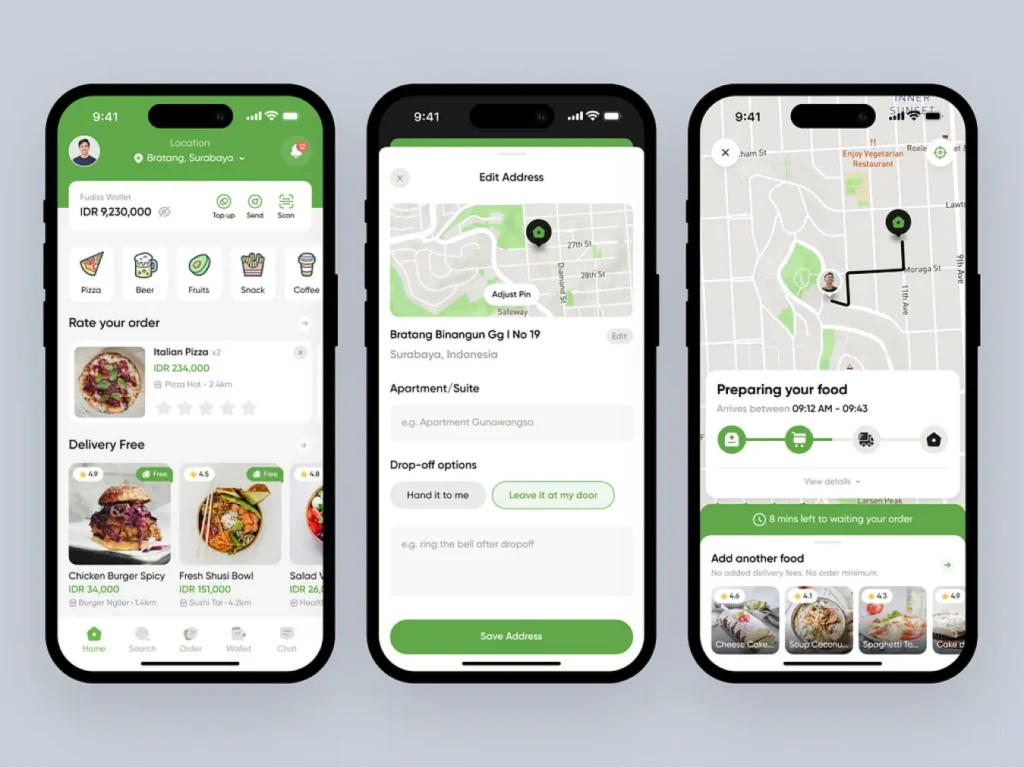
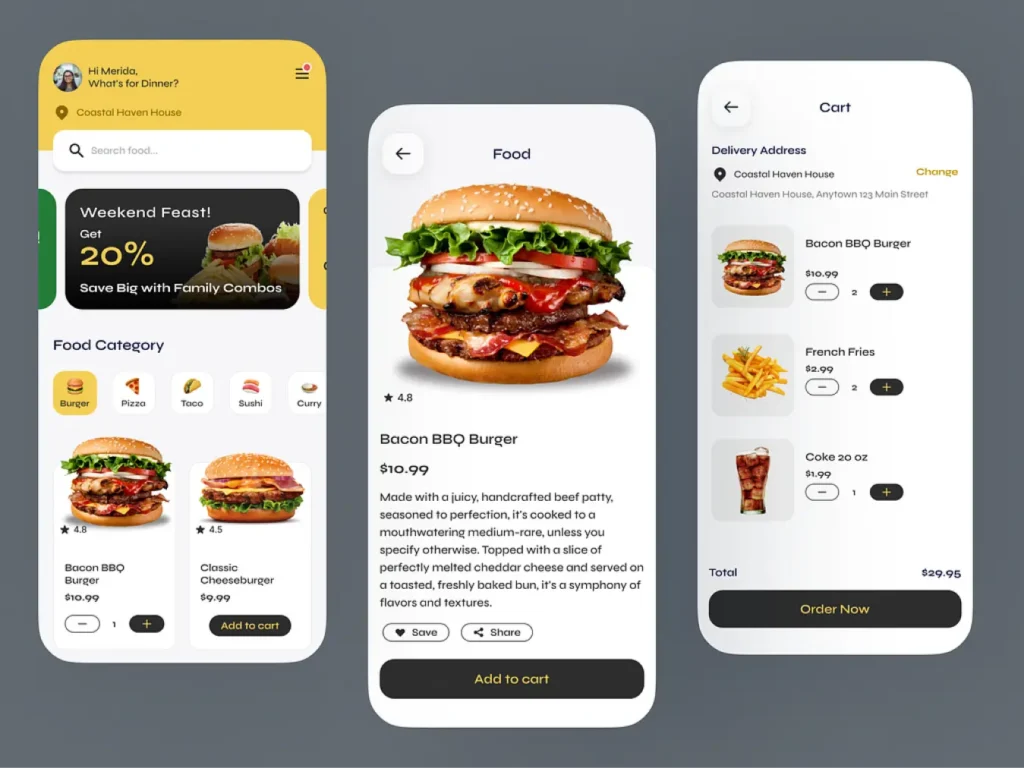
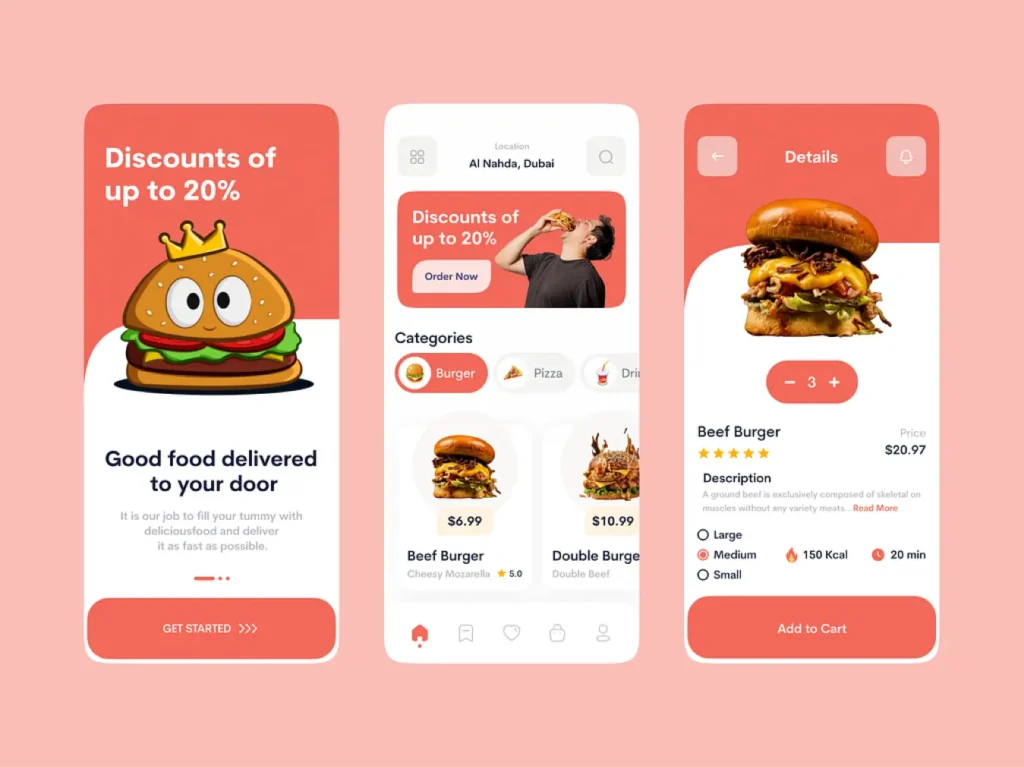
Actual Screenshot from Figjam file
Information Architecture
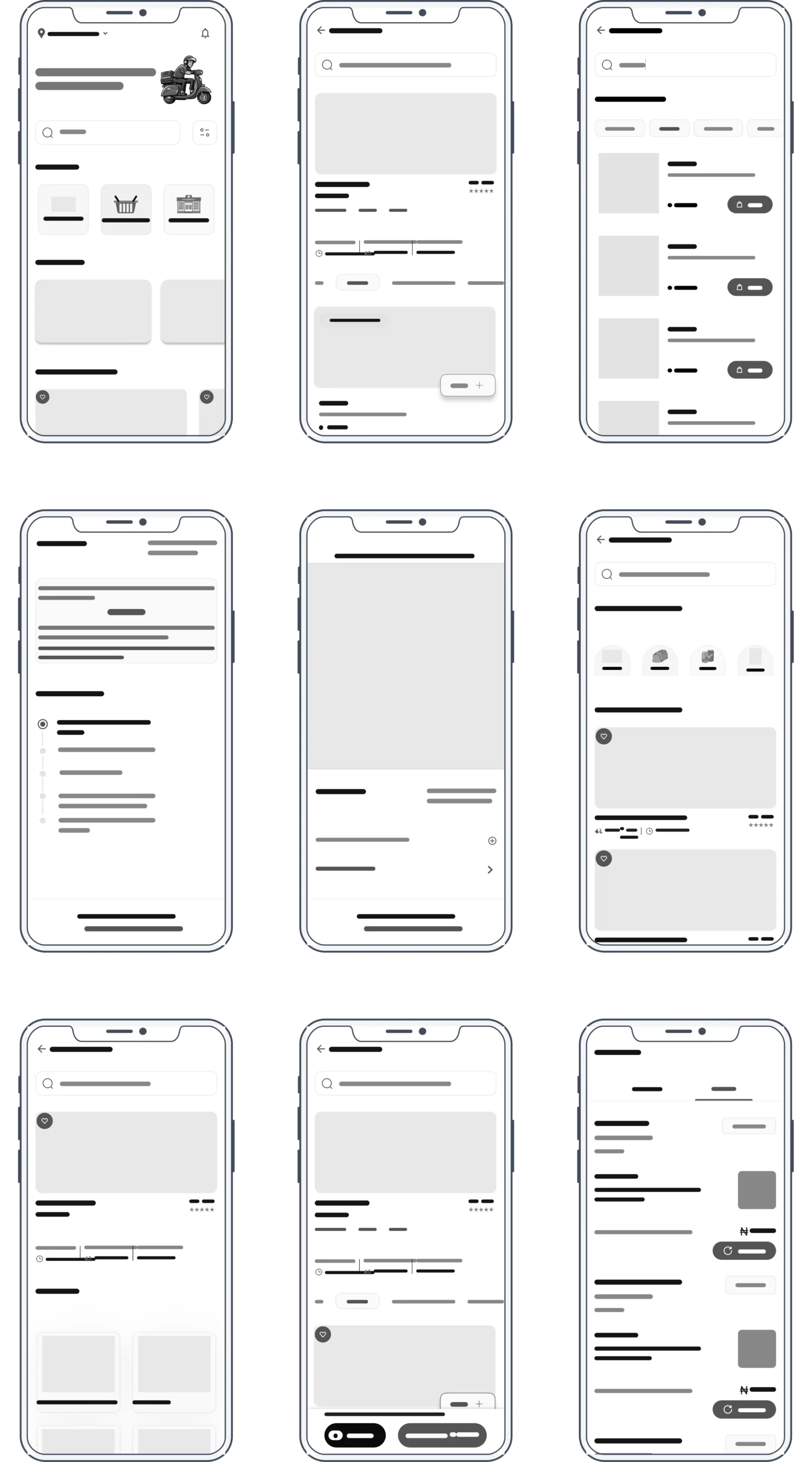
Actual Screenshot from Figjam file
Other Mockups
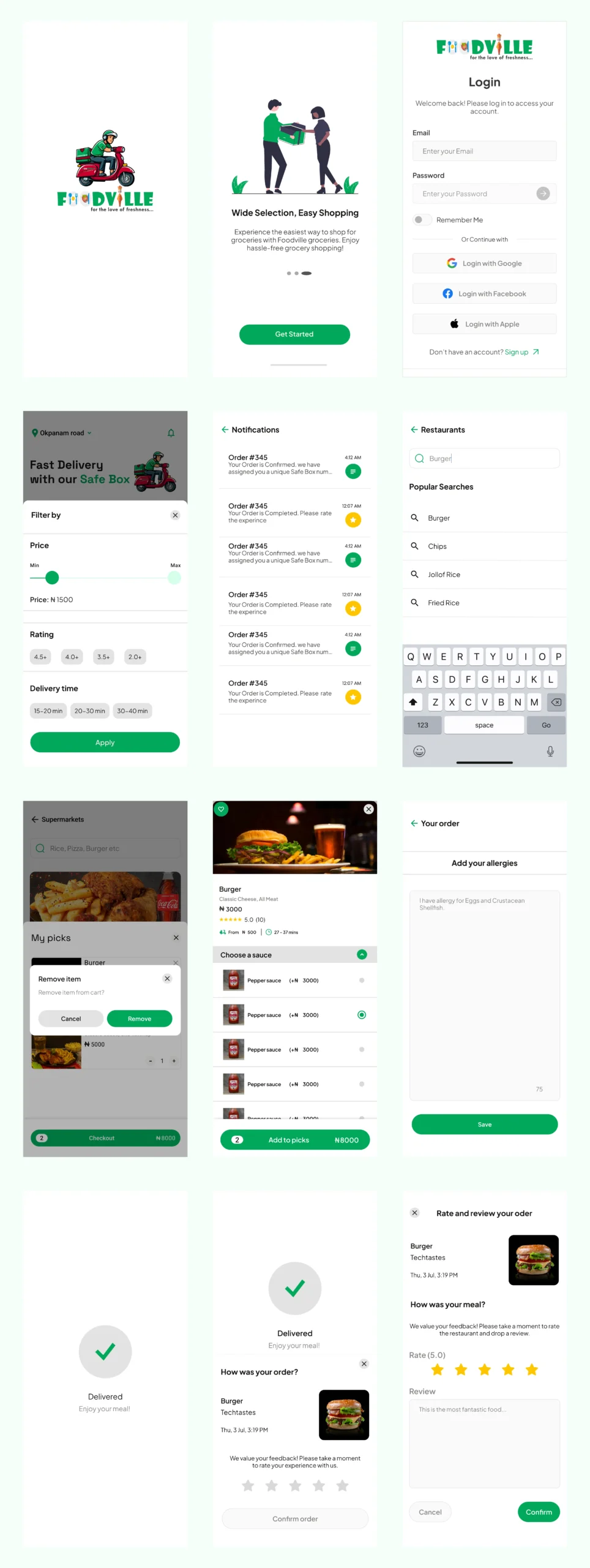
Actual Screenshot from Figma file
Major Screens Flow
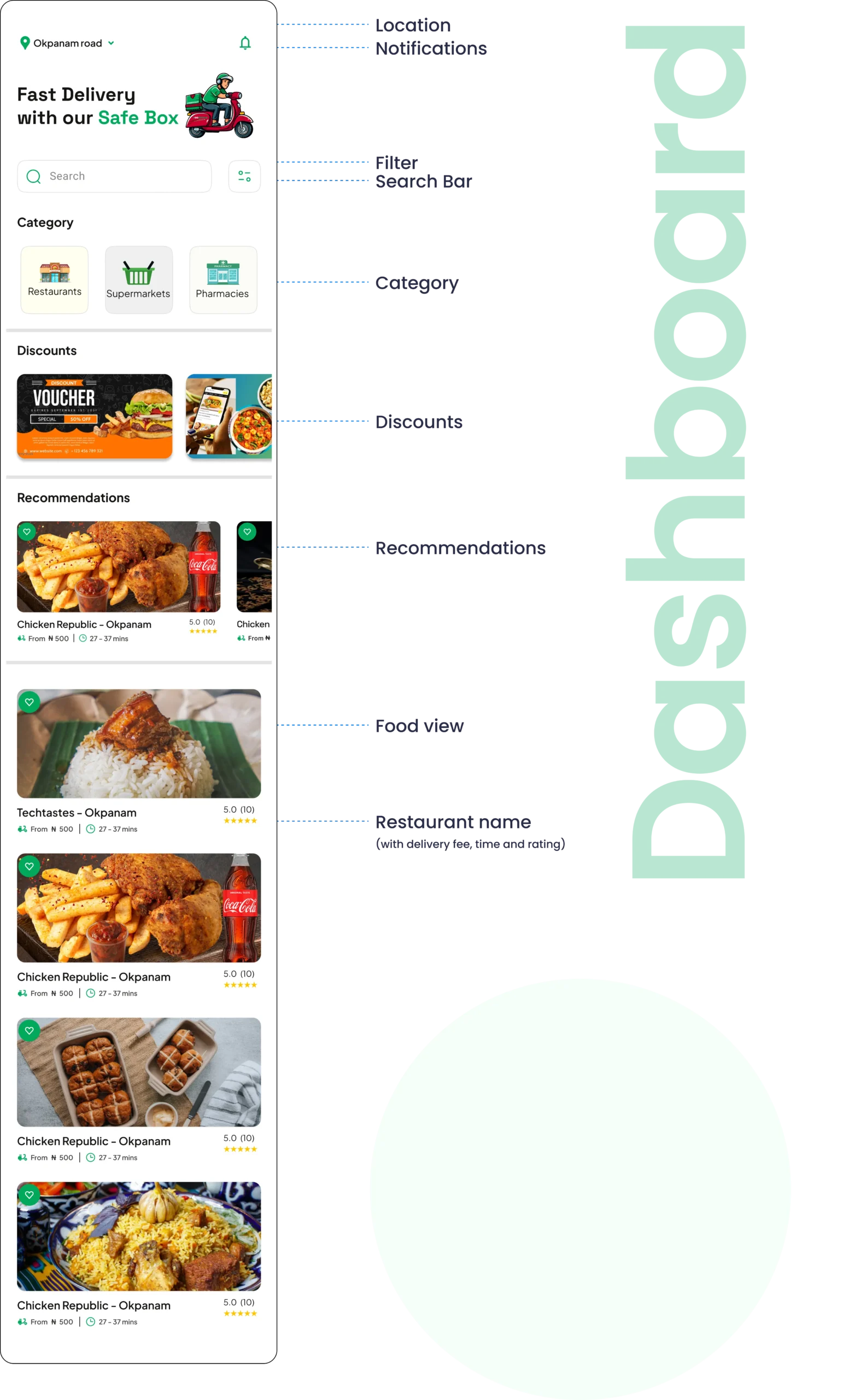
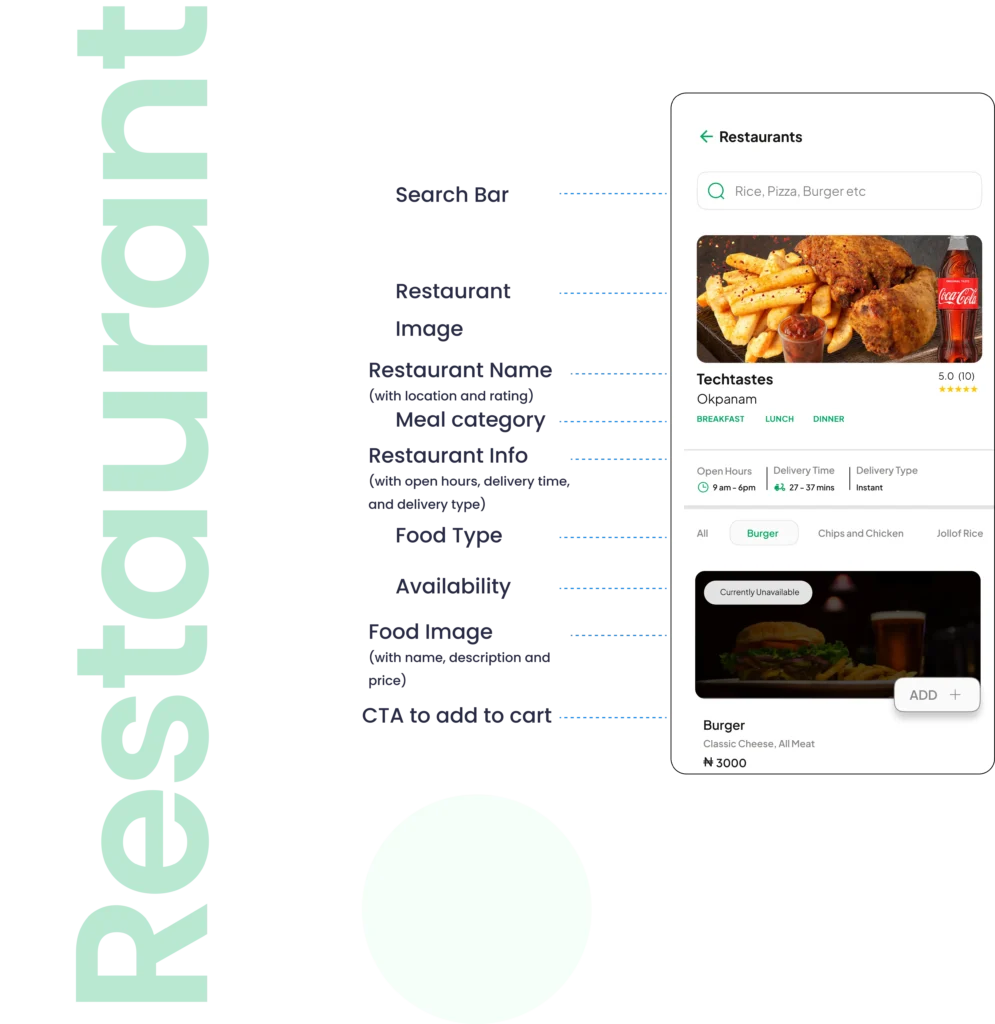
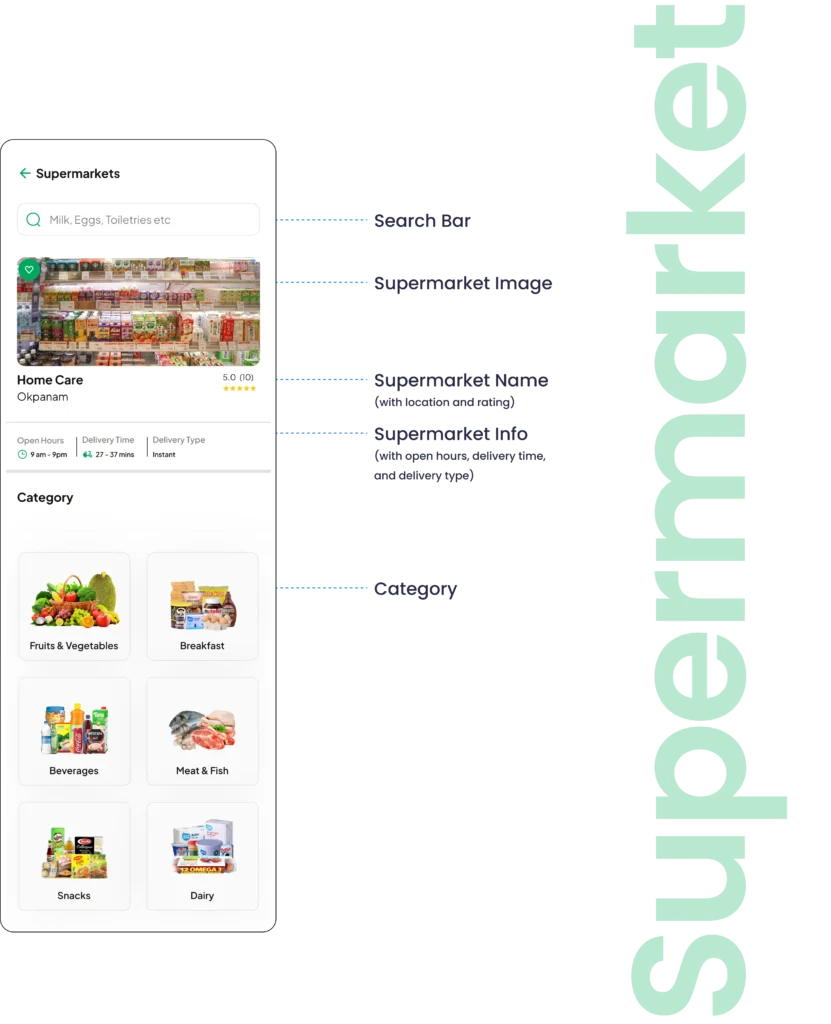
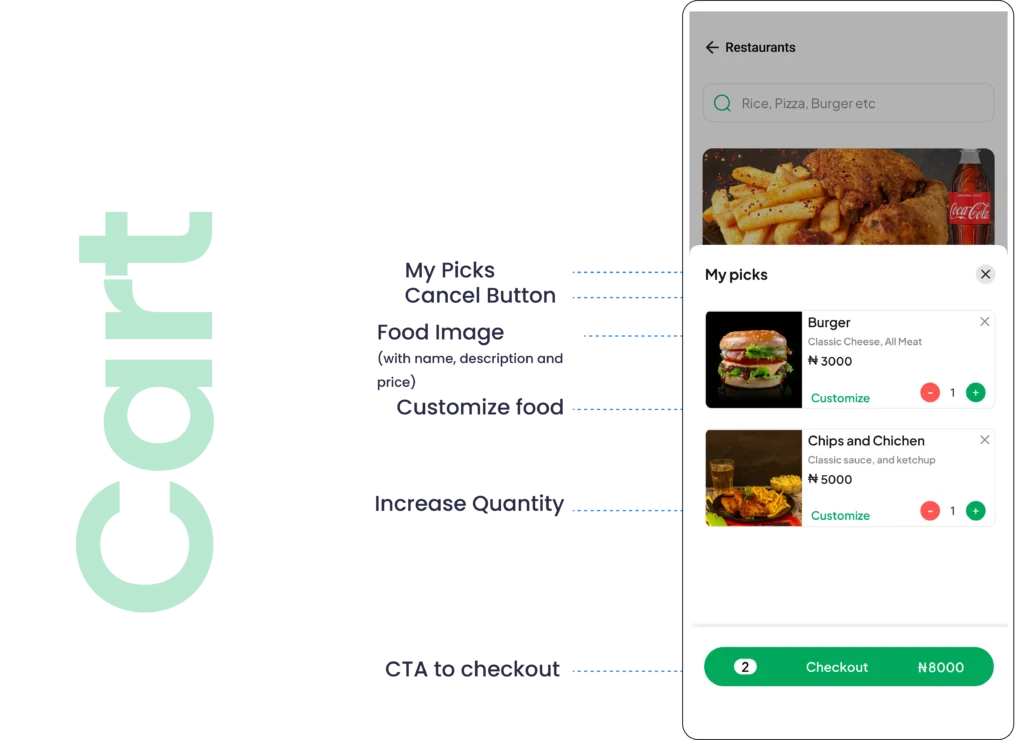
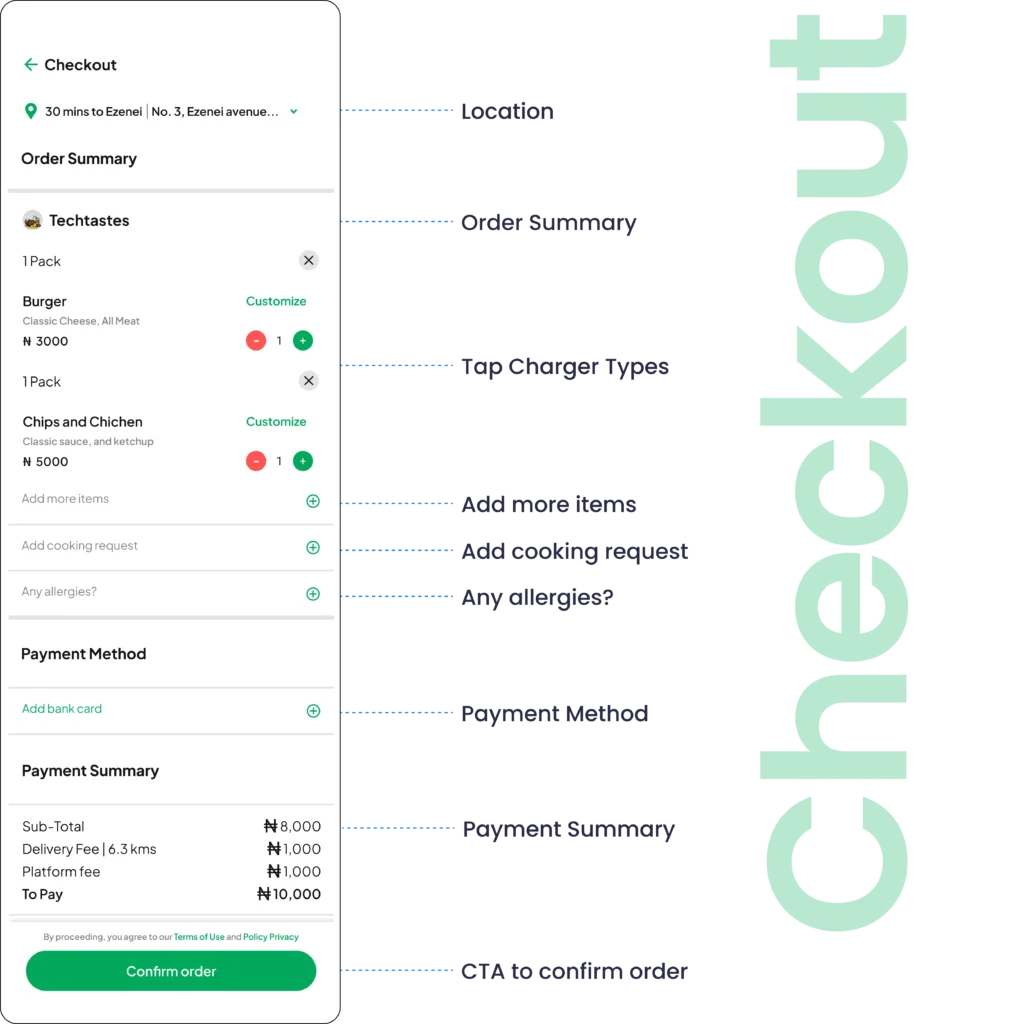
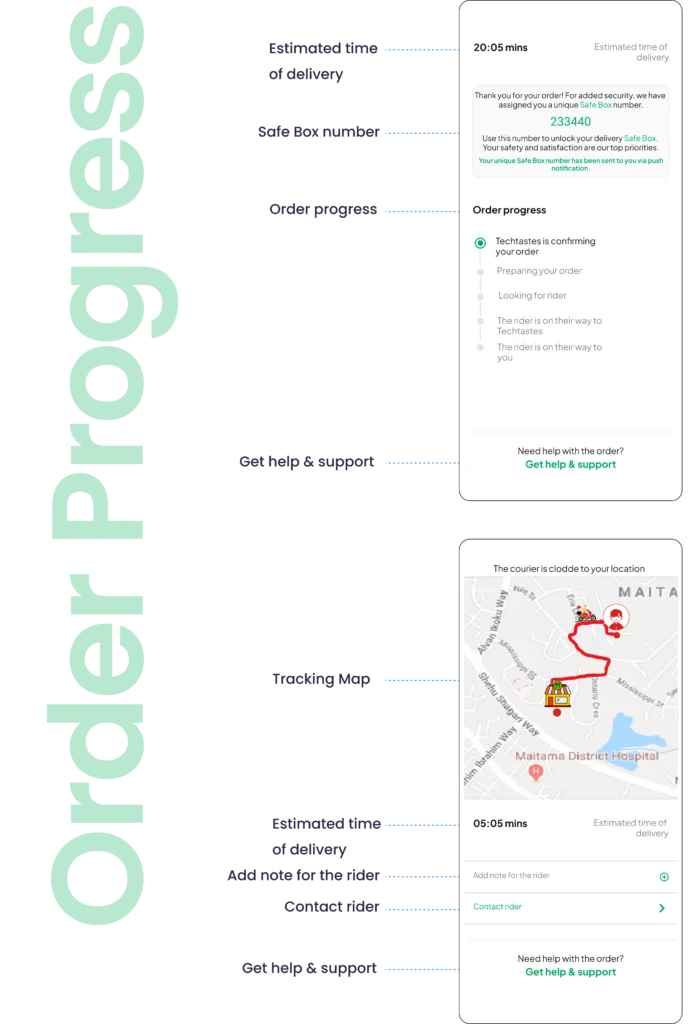
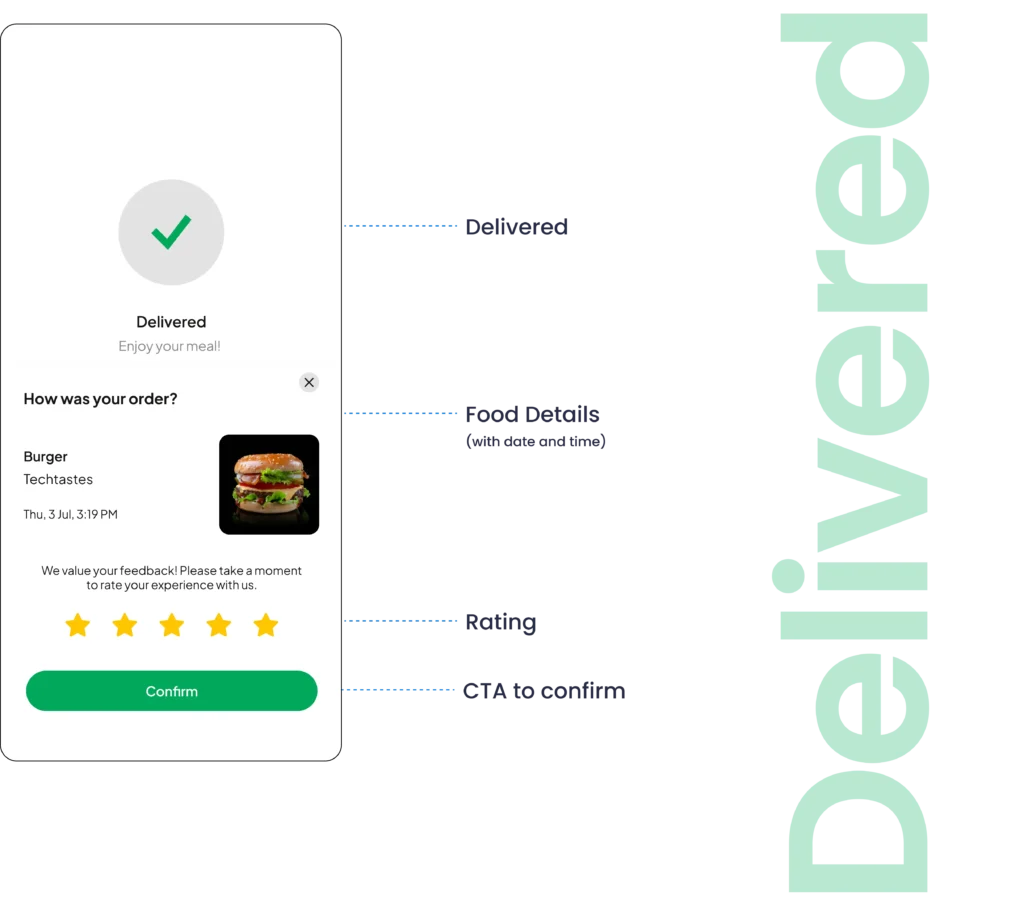
Conclusion
- In this case study, I explored the design process for Foodville, a food and grocery delivery app aiming to provide a seamless, secure, and efficient experience for users. By conducting user research, competitive analysis, and mapping user flows, I identified key challenges and pain points in the current market and worked on solutions to address them effectively.
- To tackle these challenges, I focused on designing a user-centered solution that prioritizes ease of use, accessibility, and reliability. This involved creating a simple and visually appealing user interface with clear navigation, implementing features like personalized recommendations, secure delivery options (including the Safe Box system), and streamlining the ordering and payment process for optimal convenience.
- To ensure the app meets the expectations of its target audience, I conducted extensive user research. This included creating user personas and empathy maps to gain a deeper understanding of the motivations, frustrations, and needs of potential users. These insights guided the design process and ensured that every design decision aligned with user expectations. Additionally, I carried out a competitive analysis of similar apps in the market, including Jumia Food, Bolt Food, and Glovo. This analysis helped me identify gaps in existing services and design features that provide a unique value proposition for Foodville.
- I also developed user flows and an information architecture that allows users to navigate the app effortlessly, from placing orders to receiving deliveries. This structure ensures an intuitive experience that meets user needs while encouraging engagement.
- In conclusion, I designed Foodville as a mobile app that redefines food and grocery delivery by addressing common user concerns like delivery security, reliable service, and ease of use. My design approach, grounded in user research and competitive analysis, has resulted in an innovative product that is poised to cater to its target audience’s requirements. The app is currently in the development phase and will soon be available for public use. This case study highlights how a user-centric design approach can drive the creation of a product that stands out in a competitive market.

